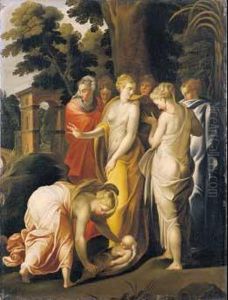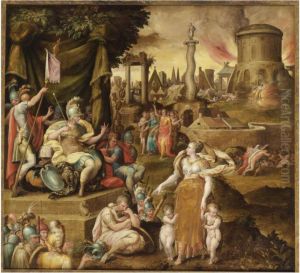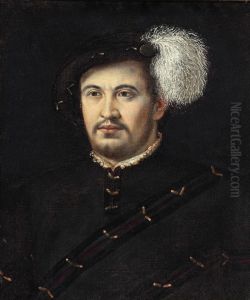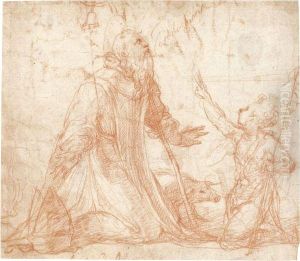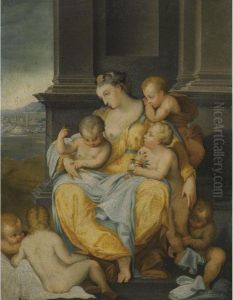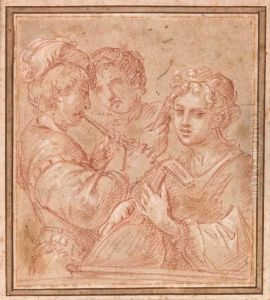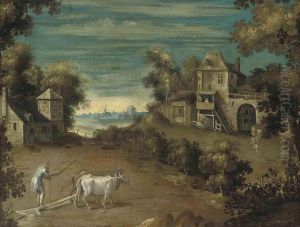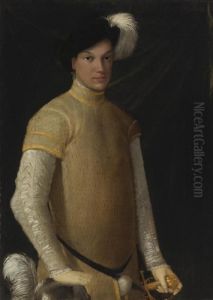Nicolo Dell' Abate Paintings
Nicolo Dell' Abate, sometimes spelled Nicolò dell'Abbate or simply Nicolò Abbate, was an Italian Mannerist painter and decorator, born in Modena, Italy. His exact birth date is contested, with some sources citing 1509 and others 1512. He died in 1571 in Fontainebleau, France. Dell' Abate's early life was spent in Modena, where he was influenced by the works of Correggio and Parmigianino, leading to his development in the Mannerist style, characterized by its artificial elegance and sophistication.
Dell' Abate's career took a significant turn when he moved to Bologna in the 1540s. There, he became a part of the vibrant artistic community, working on frescoes for the Palazzo dei Banchi and other local commissions. His work during this period showcased his skill in creating dynamic compositions and his ability to imbue his figures with emotional depth and vitality.
However, it was his move to France in 1552 that marked the most influential phase of his career. Invited by Primaticcio, Dell' Abate became a central figure in the School of Fontainebleau, which was instrumental in spreading Italian Renaissance ideas and the Mannerist style throughout France. At Fontainebleau, he worked on a series of grand projects, including the decoration of the Château de Fontainebleau, where his landscapes and mythological scenes played a pivotal role in the development of French Renaissance art.
Dell' Abate's contribution to art goes beyond his paintings and frescoes. He was pivotal in integrating the Italian Mannerist style into French art, influencing a generation of French artists and contributing to the cultural exchange between Italy and France during the Renaissance. Despite his significant impact, Dell' Abate's work was somewhat overshadowed by his contemporaries and the dominant figures of the Italian Renaissance. However, recent scholarship and exhibitions have begun to reassess his contribution, recognizing him as a key figure in the spread of Renaissance ideals beyond Italy.
Nicolo Dell' Abate's legacy is evident in the way he merged Italian elegance with French sensibilities, creating works that were both innovative and influential. His landscapes, in particular, are noted for their poetic quality and were among the earliest examples of pure landscape painting in Europe, predating the genre's popularity in the following centuries. Dell' Abate's ability to convey narrative and emotion through his works remains a testament to his skill and artistic vision.
